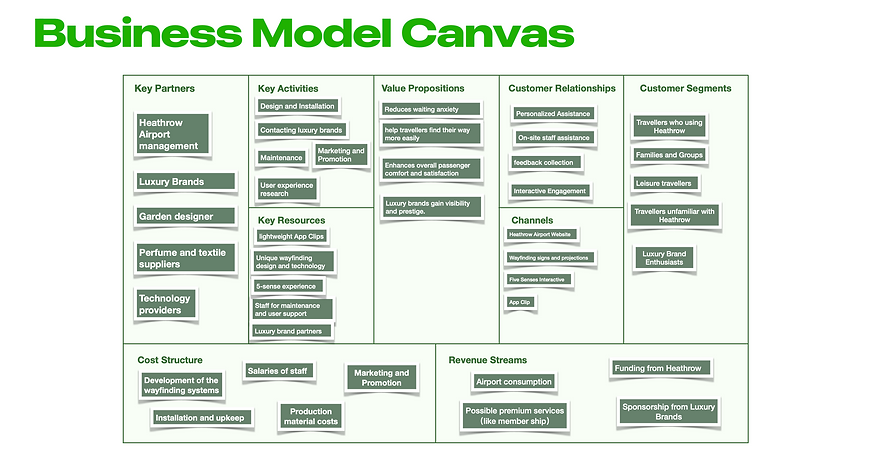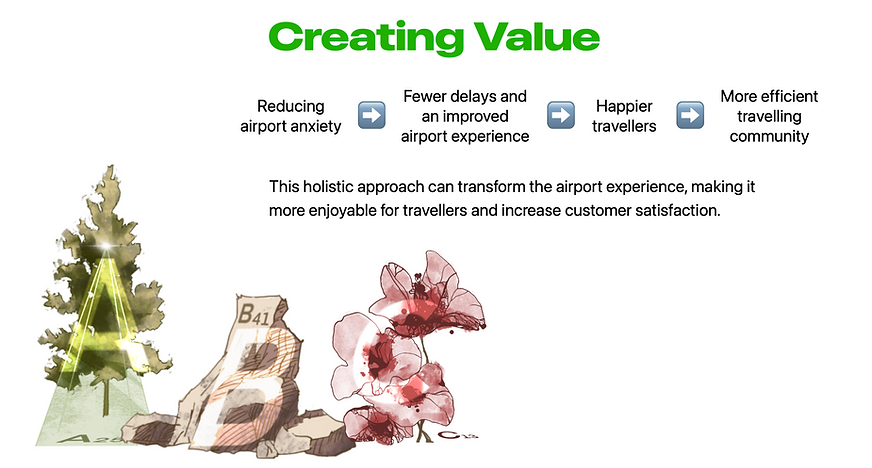Enroute & Greens
background and goal
‘Enroute&Green’ is a service design project centred on enhancing the passenger experience at Heathrow Airport (LHR). Addressing the problem of modern airports focusing too much on flow efficiency at the expense of passenger comfort, the project aims to reduce passenger anxiety, reduce the risk of missed flights and increase overall satisfaction through optimised navigation systems and multi-sensory interaction design.
The target audience is medium to long haul international leisure travellers, especially those with a high demand for an efficient and enjoyable experience.

Key solutions
Five-sense interactive navigation system:
1、Visual: Dynamic display of gate paths using projection mapping technology, combined with unified visual signage to reduce confusion.
2、Hearing: Use of sound-absorbing materials to reduce ambient noise and alleviate sensory overload.
3、Tactile and olfactory: Installation of interactive felt landmarks (to reduce echo) and introduction of natural fragrances in key areas to create a relaxing atmosphere.
Lightweight navigation tools: An ‘App Clip’ function was developed to provide passengers with real-time directions and waiting time forecasts without having to download the full app.
Greenery and art: the design of the ‘En Route & Greens’ space in the waiting area combines greenery and art installations to turn waiting time into an immersive experience.

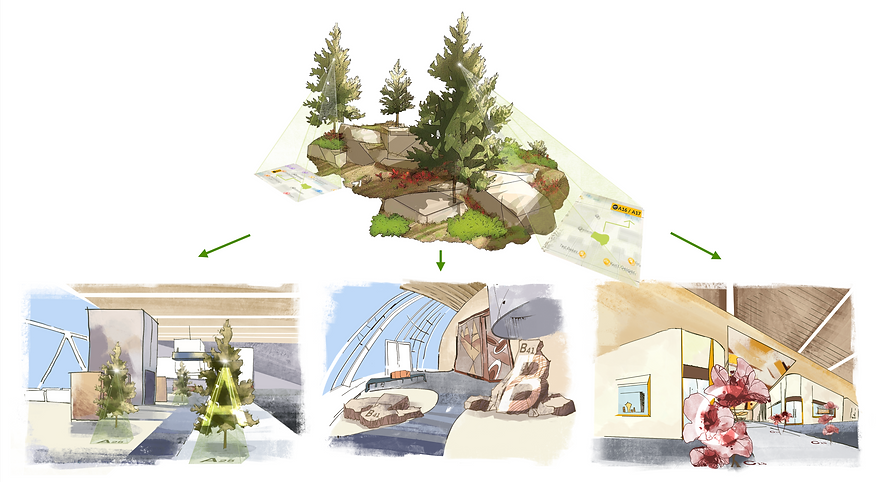

design process
1、In-depth user research: Analyse passenger pain points through user journey maps, such as long waits due to early check-in, anxiety caused by security confusion, and identify key touchpoints (e.g. check-in counters, duty-free shops).
2、Stakeholder Collaboration: Integrate the needs of airport management, airlines, retail brands, etc., and design a sustainable collaboration model (e.g., brand sponsorship of art installations).
3、Technology Integration and Prototype Testing: Prototype the navigation system with projection mapping, sound-absorbing materials, etc., and iterate the interaction logic through user feedback.
4、Business model implementation: Design the revenue model of ‘part of the navigation + part of the sponsorship’, which can reduce the operation cost of the airport and increase the commercial attractiveness at the same time.
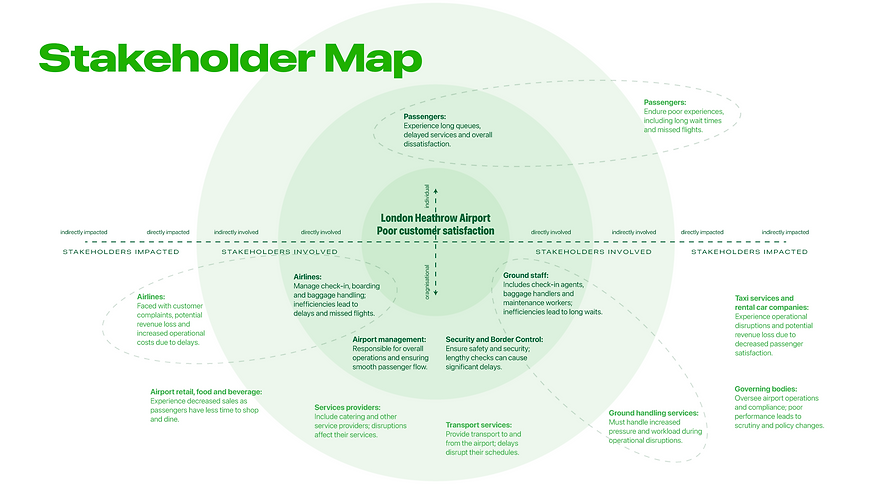


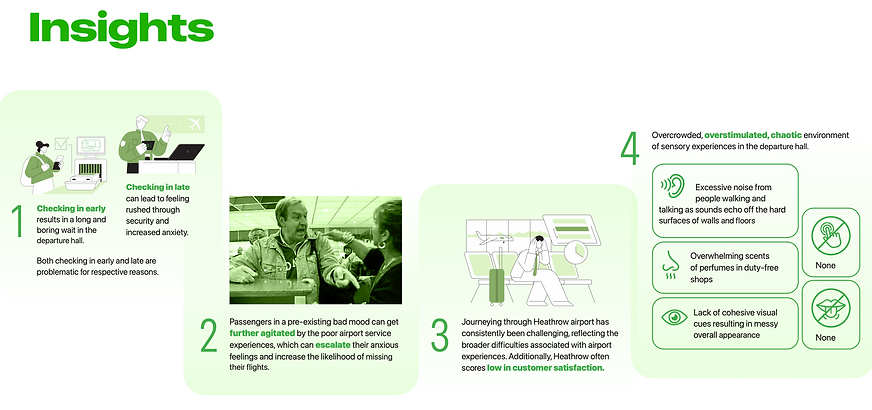
prototype
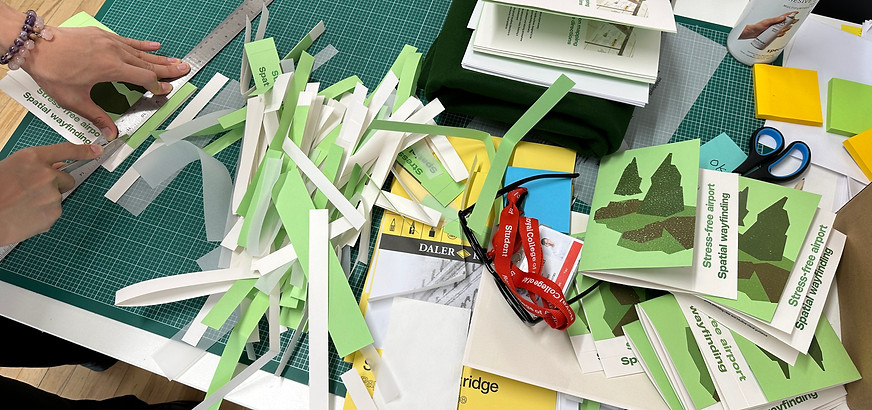
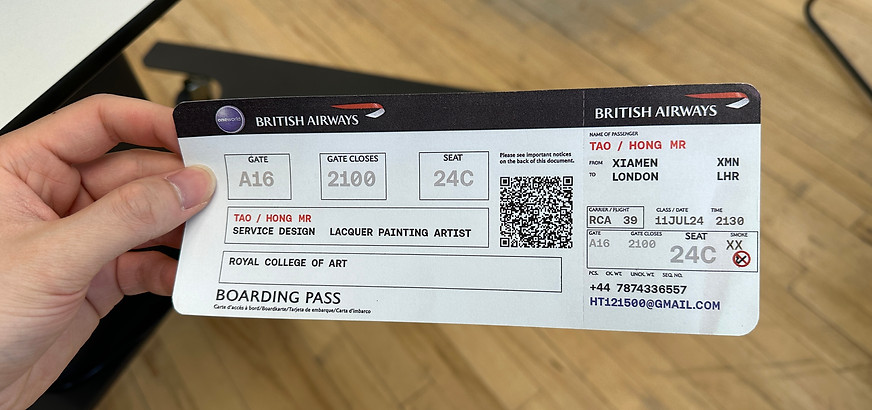
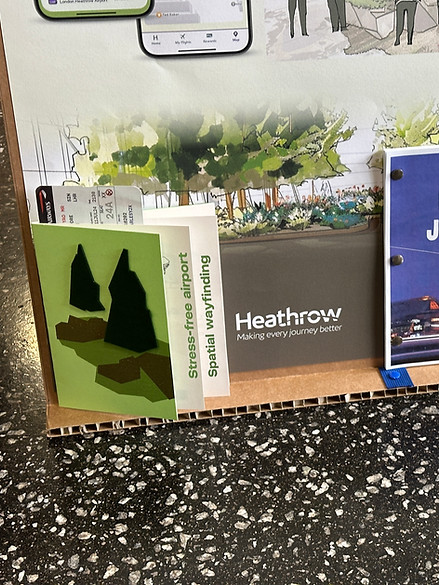
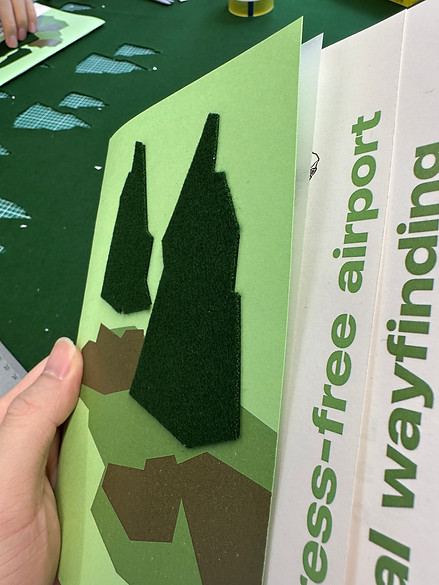
impact
Anxiety Reduction: Multi-sensory design reduces passenger stress feedback by 30% (based on simulation tests).
Efficiency Improvement: App Clip makes navigation 40% more efficient and reduces missed flights by 15%.
Value-added branding: Artistic visualisation system attracts sponsorship from luxury brands such as Gucci, enhancing the airport's business ecosystem.
Sustainability: Green spaces and recyclable materials reduce carbon footprint, in line with modern environmental trends.
